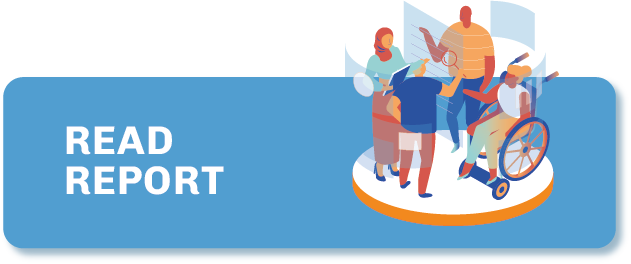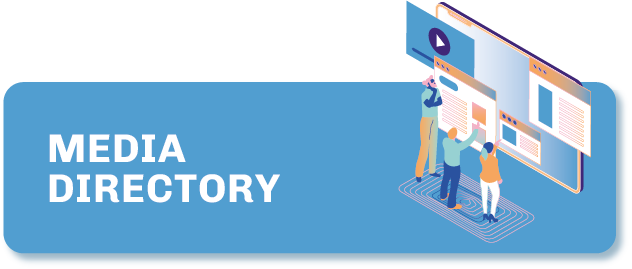Denmark
Over the last decade, a diverse range of digital news media outlets has been founded in response to public service news media. While these outlets publish less content compared to their public service competitors, they are becoming increasingly important for Danes who want more depth in their news content. It is worth noting that many of these new actors in the market heavily use podcasts to disseminate their journalistic content. These new organisations wish to strengthen trust between journalists and the public, but do so in different ways.
GENERAL INFORMATION
Press
freedom
ranking
Internet
penetration
POPULATION
Media organisations
in the Directory
TYPE OF COVERAGE

TYPE OF ORGANISATION

GENDER OF FOUNDERS

Press freedom
Press freedom in Denmark is very strong. While there may not be a wealth of legislation directed towards the media sector, the sector is governed by self-regulating norms and general laws. All of the news media outlets included in the directory are members of the Press Board, an independent board made up of non-politicians that make decisions in complaint cases. They thereby submit themselves to the same scrutiny as legacy players in the news sector.
Media structure and dominance
The news market in Denmark is heavily dominated by public news media, such as DR (which dominates television and radio news) and TV2 (which dominates local news stations), according to the country’s Ministry of Culture. Print news is a more diverse market, with several privately run newspapers in competition with each other, according to recent academic research. Due to massive digitisation in Denmark, which has an internet penetration rate of 97.7%, all market actors in news are working towards digitising their content and practices. In practice, this has meant that many news media outlets are de facto on a 24-hour news cycle, since their websites can be updated at any time. The vast access to the internet makes it equally viable for seasoned as well as new journalists to start digital native news media outlets. The market for independent, digital news media organisations remains positively diverse and volatile, with “defectors” from legacy media making an entrepreneurial turn towards starting their own publications.
How media is funded
With regards to how media outlets are funded in Denmark, one fact often raises eyebrows when mentioned outside Scandinavia – state subsidies play an important role in the funding of media outlets in Denmark, in part because the Danish-language media market is very, very small, as noted by researchers. While this may sound suspect to some people’s ears, there has never been a case of overt political interference in the news by tampering with subsidies. This is due to a political stance called the “arm’s length principle”. This complex relationship between the welfare state and news media has become a point of interest for Scandinavian media scholars in recent years (see for example research by Peter Jakobsson, Johan Lindell and Fredrik Stiernstedt, or Aske Kammer).
Four profiles of digital native media organisations from Denmark are included in the directory.
One of the most interesting findings from this research is how the new media organisations have been created in response to what they find lacking in the public service media sector. This does not mean that they are suspicious of mainstream media organisations. Their journalistic practices and content are meant to show a different way for journalism; one that, among other things, is not caught up in a 24-hour news cycle.
Zetland is an example of a publication that publishes less content, but makes up for this in nuance and depth. Pov.International is an example of a news medium trying to organise itself differently, by being completely self-owned and non-profit. TjekDet is a fact-checking news site, which produces news about news, highlighting errors and corrections. Verdens Bedste Nyheder engages in constructive journalism, focusing on global stories about positive sustainability developments.
In a general sense, it could be argued that all of the organisations engage in constructive journalism, since they intend to not only report the news, but to positively impact society.This positive impact can be boiled down to wanting to strengthen trust between journalists and the public. What these organisations represent are different shades of activism towards the “business-as-usual” approach seen in public service media, but not in a way that intends to polarise or foster distrust towards mainstream news media.
The editorial line for these new organisations leans more towards the entrepreneurial than the ideological, in the ways they seek to create valuable content for specific segments of the population, according to academic research. The motivation to target specific audience segments does not stem from an interest in polarisation, but rather to deliver value, in the form of quality journalism, to their readership and listenership.
The value for news consumers from these new organisations is also their focus on specific themes. Themes such as climate change, immigration and technology are present in public service broadcasting, but not investigated with the same depth as for example in Zetland and Respons. An earlier point deserves to be reiterated: podcasting is heavily utilised by most of the new media organisations. It is equally prevalent among public service media organisations, especially DR. Another business model innovation is the use of memberships for funding.
A key takeaway from this research is the diversity in the current digital native news market. Easy access to the internet for journalists and consumers makes it viable for new actors to enter and exit the market. It could be stated that the dominance of public service media organisations remains a challenge, but it is important to understand that the goal of these new outlets has never been to replace them.
Last updated: January 2023
CREDIT FOR STATISTICS: Press Freedom statistics, RSF Press Freedom Index 2022; Internet penetration and population statistics, from Internet World Stats

